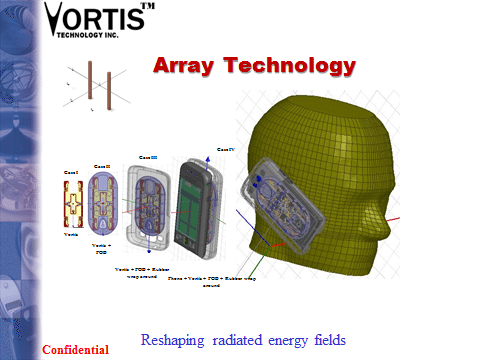Have you heard about SAR? The acronym stands for Specific Absorption Rate and relates to the radiation exposure levels of electronic devices. It’s an important measurement for human health and that’s why all phones undergo careful evaluation of their SAR by the Federal Communications Commission (FCC) in the United States.
 |
| Model Specific - Blackberry among the best and worst |
Working closely with federal health and safety agencies, such as the Food and Drug Administration (FDA), the FCC has adopted limits for safe exposure to radiofrequency (RF) energy. These limits are given in terms of a unit referred to as the Specific Absorption Rate (SAR), which is a measure of the amount of radio frequency energy absorbed by the body when using a mobile phone. The FCC requires cell phone manufacturers to ensure that their phones comply with these objective limits for safe exposure. Any cell phone at or below these SAR levels (that is, any phone legally sold in the U.S.) is a "safe" phone, as measured by these standards. The FCC limit for public exposure from cellular telephones is an SAR level of 1.6 watts per kilogram (1.6 W/kg).
Common sense suggest less exposure to cellphone radiation is better, and the cautious thing to do is own a phone with the lowest SAR rating. Your attention should be on Samsung at this point because they make 12 of 20 lowest SAR Smartphones. This makes a very substantial difference, users of the twenty highest SAR cell phones in the USA can absorb several HUNDRED times more radiation in their heads than users of the twenty lowest SAR smartphones.
For example, the Samsung Galaxy Note 3 N900V made for Verizon has an FCC measured SAR of only 0.35 W/kg (watts per kilogram). while an Apple iPhone 6 Plus exposes a user’s head to a whooping 1.19 W/kg. That’s a 340% increase from highest to lowest on these high-end smartphone devices.
Samsung was able to do this because of regulatory ground work done by Silicon Valley start-up Vortis Technology. Under the leadership of Vortis CEO, Jim Johnson, Vortis led-the-way for changing an out-dated FCC rule on July 10, 2003, which had long forced cellphone companies to use antenna’s that transmitted 360 degrees, transmitting isotropically, known as omnidirectional in the wireless industry.
- iPhone 6 SAR Nearly Exceeds Legal Radiation Limits for Simultaneous Rating September 20, 2014
After the FCC’s isotropic rule was changed so hearing aids would not be disrupted by phone radiation — Samsung went into R&D mode, leading to an innovative antenna system three years later in 2006, in their words, “enhances handset safety by radiating most of the transmitted RF energy away from the handset user” (more energy from back of phone) and improved RF (radio frequency) performance.
Samsung Galaxy S4 Low SAR Level Revealed
 |
| SAR measurements are complex |
FCC quietly changes guidance on cellphone radiation risks, further isolates San Francisco law
The FCC quietly changed its long-standing recommendation that consumers concerned with cellphone radiation should purchase phones with lower SAR levels -- SAR meaning Specific Absorption Rate or the rate at which at which energy is absorbed by the body. The revision to the FCC website was made last week without any formal announcement. Odd, given the brouhaha created when the city of San Francisco passed a law requiring retailers to display SAR values next to cellphones as part of "right to know" safety campaign. A move that caused the CTIA to pull its fall event out of The City only to replace it with a big fat lawsuit. Here's a snippet from the FCC Consumer Fact sheet about SAR for Cellphones:
The FCC Bottom Line
ALL cell phones must meet the FCC’s RF exposure standard, which is set at a level well below that at which laboratory testing indicates, and medical and biological experts generally agree, adverse health effects could occur. For users who are concerned with the adequacy of this standard or who otherwise wish to further reduce their exposure, the most effective means to reduce exposure are to hold the cell phone away from the head or body and to use a speakerphone or hands-free accessory. These measures will generally have much more impact on RF energy absorption than the small difference in SAR between individual cell phones, which, in any event, is an unreliable comparison of RF exposure to consumers, given the variables of individual use.

1 comment:
cell phone radiations are really harmful for us,..we must use protectors for these radiations,.
protection
Post a Comment